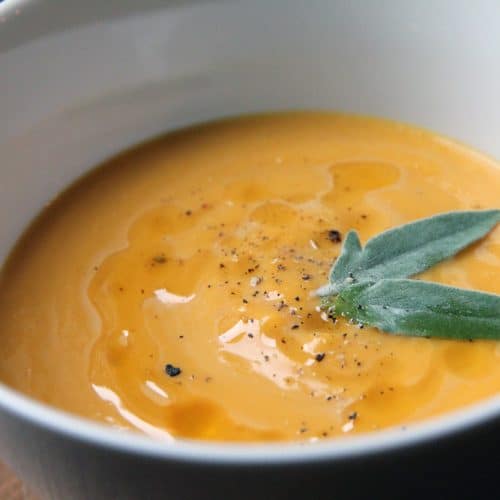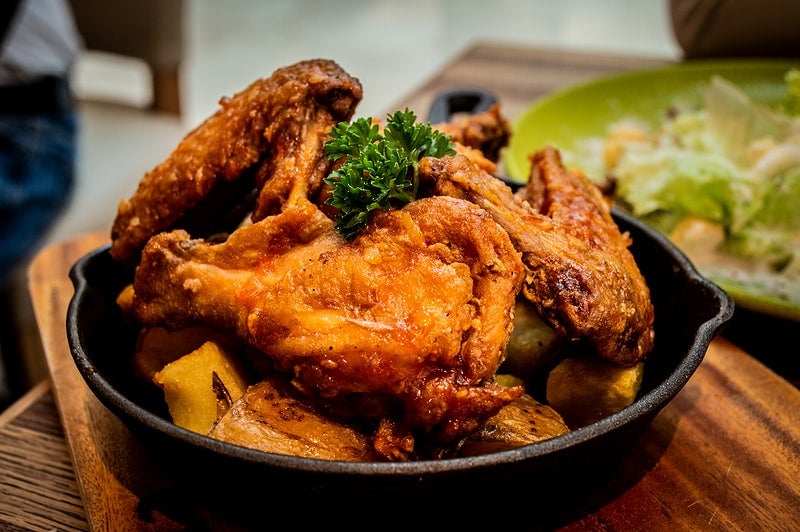- How to Make Ramen in the Microwave - November 29, 2025
- How to Cook Sweet Potatoes in Microwave - November 29, 2025
- Slow Cooker Potatoes Recipe - November 29, 2025
Autumn arrives like a giant painter throwing warm, cozy colors all around. This season brings fresh, tasty farm goodies that shout to be tried. People who love bold flavors and stunning fall views find their senses come alive. Notice how this bright change wakes up taste buds and cheers up the mood like a cool, sharp breeze. Discover why this time could turn into the most delicious adventure ever. Keep reading to uncover the secret treats hiding deep inside autumn’s soul.
Butternut squash is one of the many blessings that come with autumn.
The best way to enjoy your butternut is to try out the McAlister’s autumn squash soup recipe.
A good squash soup recipe that uses organic healthy ingredients is a must have for every home.
You will always make your belly happy with the sweet, rich and naturally creamy taste of a good butternut squash soup.
Its thick and velvety texture is easy on the pallet and makes the soup a great condiment to go with a variety of dishes.
There are no shortcuts to making a great soup.
The secret to making a delicious soup is in the details.
McAlister’s autumn squash soup recipe takes care of all the details.
This recipe has easy steps that any novice can easily follow.
The first step to making a great soup is choosing the right ingredients.
How to choose a perfectly ripe butternut squash
You cannot make a great soup from a poor quality butternut squash.
A butternut squash that is under ripe will not have a rich flavor and one that is over ripe may be flavorless.
Here are some sure ways to help you pick the right butternut squash for your soup.
The weight of the butternut squash
A well ripe butternut squash will be heavier than it looks.
Pick up a couple of butternut squashes to figure out the average weight you should be working with.
A squash that has a very light weight is likely not well rippen.
The squash should be heavy but also make a hollow sound when you knock the surface with your knuckles.
The stem of the butternut squash
A fresh butternut squash will have its stem still intact.
A squash that does not have its stem still attached is likely past its prime.
Check the stem of the butternut squash to see whether it is firm.
A firm stem with the right color indicates that the squash is good for use.
The skin of the butternut squash
You can tell a lot from the skin color and appearance of a butternut squash.
Examine the hue of the skin.
A well ripen squash will have a dark beige color with a deep hue.
Green streaks in the skin shows that the squash is not yet ripe enough.
Choose a butternut squash that has an even skin color and a matte look.
A shiny texture shows that the squash was picked too early from the farm.
A tough skin is also a good sign.
Check for blemishes
Closely inspect a butternut squash for any blemishes that may be a bad sign.
Soft spots or cuts may cause the squash to get mold or rot.
Brown spots on the squash may indicate effects of frost or other external factors that may make the squash not to last very long.
Once you have the best quality butternut squash in hand, you are a step towards making the best soup.
If you are still unsure of the squash you have picked, no need to worry, the experts at the farmers market can always point you to the right one.
Ingredients for the McAlister’s autumn squash soup recipe
●500g of squash pulp
●Vegetable broth or hot water
●300g chestnuts
●Nutmeg
●2 shallots
●Black pepper
●3 sage leaves
●Salt to taste
●1 sprig rosemary
●Extra virgin oil to taste
Instructions
In a pan, put some salted water, chestnut, rosemary and a bay leaf, and boil for 15 minutes.
After 15 minutes, put the mixture aside to cool and peel the chestnut.
Put some chopped shallot and bay leaves in another pan and fry them with oil until brown.
Add in the squash and vegetable broth or hot water, and allow it to cook for 15 minutes.
Season the mixture with salt, pepper, and the chestnuts mixture.
Boil the mixture a little more. Blend the mixture until smooth.
What to serve with McAlister’s autumn squash soup
Salad
A light salad side dish makes a great combination of sweet, savory and tangy flavor.
Although the McAlister’s autumn squash soup recipe already has vegetables in it, a good salad will make a great side dish.
There are endless possibilities in terms of the kind of salad to make for a side dish.
You can make a salad out of spinach, cranberries, walnuts, apples, and goat cheese.
Dress your salad with apple cider vinegar, lemon juice, honey, Dijon mustard, salt and pepper.
Roasted vegetables
For the McAlister’s autumn squash soup recipe, we are going with the in-season produce.
Root crops are the best and easily available option for roasted vegetables in the fall.
Sweet potatoes, parsnips, turnips, and beets are very flavorful and caramelize when roasted.
Slice the vegetables, drizzle some olive oil, put them on a baking sheet and pop in the oven.
Glazed carrots
Slice carrots into even sized pieces and glaze them with your favorite sweetener.
You can use maple syrup, granulated sugar, honey or brown sugar to give your carrots a sweet taste.
Saute the carrots in butter and enjoy!
Kale chips
Kale chips are a great option for a side dish.
They have a crunchy flavor that will go well with the creamy texture of the butternut soup.
They are also pretty easy to make.
Tear the kale leaves off the stem, wash thoroughly, and dry them well.
Put the kale on a baking sheet and drizzle some virgin oil and salt.
Bake at 350 degrees Celsius for 15minutes.
Common mistakes you may be making with your squash soup
The McAlister’s autumn squash soup recipe is an eye opener for some of the things you may have been doing wrong.
As you make your soup, remember that every ingredient is important just as every cooking technique and step.
Here are some of the things you may be doing wrong and how to fix them.
1.You are not browning your vegetables
Throwing your vegetables into a pot and simmering until they are tender is not the best way.
Browning your vegetables in oil brings out all their unique tastes making your soup to be more flavorful.
Ensure that the vegetables have browned on both sides before adding the vegetable broth to the mixture.
2.You are not seasoning your soup correctly
Typically, many cooks wait until the end to add salt and other spices.
Adding salt and spices early in the cooking process will make the soup catch on the spices well.
Add the salt and spices to the vegetables as in the McAlister’s autumn squash soup recipe.
Another mistake you might be making is putting too much or too little seasoning in your soup.
You can still salvage your soup if you have put in too much salt.
Simply add some more water or vegetable broth.
However, ensure that the pre-cooked vegetable broth does not have a lot of salt as it may cause more problems.
3.You are cooking grains and pasta in the soup
In case you want to add grains or pasta to your soup, cook them separately first.
Cooking the grain or pasta with the soup will make them absorb a lot of liquid and become soggy.
The best way to do it is to cook them separately then add into your bowl of soup once it is ready.
4.You are not using the recipe well
Before diving into the actual cooking, ensure you have read through the McAlister’s autumn squash soup recipe.
Reading through the recipe first, will make you know what to anticipate and so you can plan better.
FAQs
What protein goes best with the McAlister’s autumn squash soup?
Chicken is the best protein option to go with the autumn squash soup.
To make the meal filling, you can add some Italian sausage, white beans and butternut squash kale.
Why does my butternut squash have a bitter taste?
The quality of the butternut you have used in your McAlister’s autumn squash soup recipe will determine the taste.
High levels of Cucubitacin, a chemical compound found in butternut squash, causes a bitter taste in the soup.
The high levels of cucubitacin are a result of negative environmental factors or poor farming practices.
What are the best spices to use so that my butternut soup does not taste bland?
Butternut squash soup is a naturally sweet soup that goes well with oregon, nutmeg, cinnamon and brown sugar.
If you want to make your soup extra spicy you can add a dash of cayenne powder.
How can I make butternut squash soup thicker?
A quick way to increase the thickness of your butternut soup is to add cornstarch or flour.
Add a little bit at a time as you keep stirring until you achieve the consistency you desire.
Both the cornstarch and flour give the same result.
Conclusion
Right there is a reason to look forward to every fall!
Use the McAlister’s autumn squash soup recipe to create a great family tradition.
With a lot of fresh produce at hand, you can spruce up your soup with interesting natural flavors every autumn.
You have now figured out the possible reasons why your soup was not coming out great.
Surprise your family and friends with a warm bowl of butternut soup that is irresistibly delicious this fall.
Every time that sweet smell comes out of your kitchen, you will make someone’s belly very happy!

McAlister’s autumn squash soup recipe: Easy steps, great taste!
Equipment
- 1 Pan
Ingredients
- 500 g squash
- 1 Vegetable broth
- 300 g chestnuts
- 1 Nutmeg
- 2 shallots
- 1 Black pepper
- 3 sage leaves
- 1 Salt
- 1 rosemary
- 1 virgin oil
Instructions
- In a pan, put some salted water, chestnut, rosemary and a bay leaf, and boil for 15 minutes. After 15 minutes, put the mixture aside to cool and peel the chestnut.
- Put some chopped shallot and bay leaves in another pan and fry them with oil until brown. Add in the squash and vegetable broth or hot water, and allow it to cook for 15 minutes.
- Season the mixture with salt, pepper, and the chestnuts mixture. Boil the mixture a little more. Blend the mixture until smooth.



